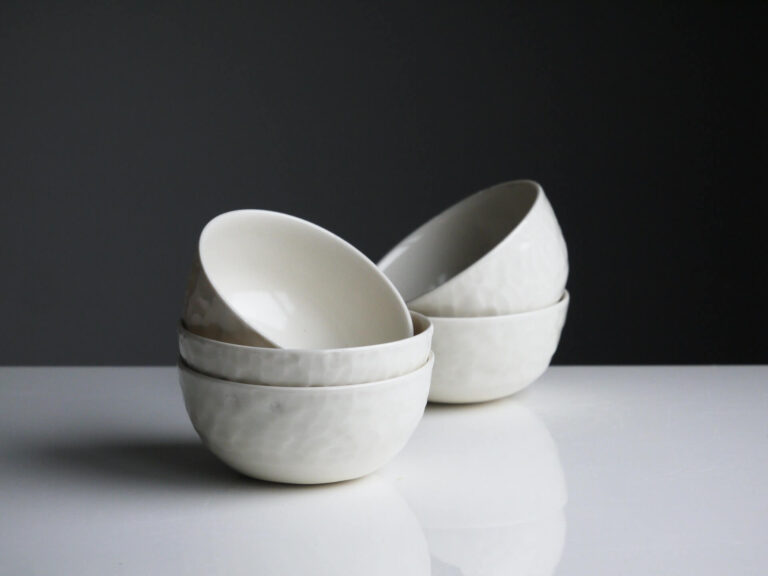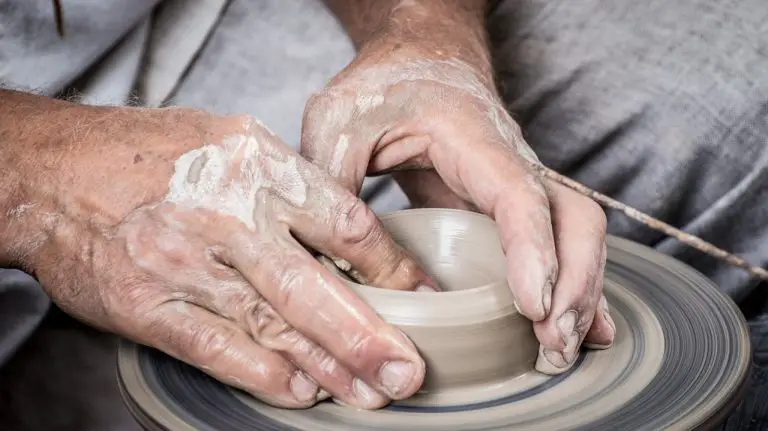What Is Earthenware Pottery?
Besides stoneware and porcelain, earthenware is one of the main types of pottery. And if you know what to look for, you can find it all around you in your daily life.
Earthenware is a type of potter that is normally fired at temperatures below 1,200 °C (2,190 °F). Fired earthenware is naturally porous and can absorb liquids such as water, which is great for flower pots. Glazing earthenware will coat the surface with a ceramic layer, which makes the earthenware watertight and suitable for domestic use.
What is earthenware made off?
Earthenware is typically made from a type of clay that is relatively soft and porous compared to other types of pottery.
The clay used to make earthenware is usually a blend of ball clay and kaolin, mixed with minerals like quartz and feldspar.
The specific composition of the clay can vary depending on the intended use of the earthenware. For example, some earthenware clays produce more porous bisqueware or can be fired at high temperatures.
Characteristics of earthenware
There are two ways that you can easily distinguish earthenware from other types of pottery.
Porosity: earthenware clay is a type of clay that is fired at a low temperature, and it doesn’t get hot enough to turn into a non-porous material.
That means that earthenware pottery is a bit porous, and it can still absorb moisture after it’s been fired. On the other hand, stoneware and porcelain clay are fired at a higher temperature, so they turn into a non-porous material that won’t absorb moisture.
Softness: earthenware is a bit on the soft side compared to other types of pottery. In the world of ceramics, the words soft, medium, and hard refer to firing temperatures. Soft temperatures are on the lower end, between 1112F-1922F (600-1050C), while hard temperatures are on the higher end, between 2102-2552F (1200-1440C).
But even beyond firing temperatures, earthenware is just softer in general. Of course, once it’s been fired, it turns into a hard ceramic material, but it’s still not as strong as some other types of pottery. Since it’s less dense and more porous than stoneware or porcelain, it’s more likely to chip or break if you’re not careful with it.
Non-vitreous pottery
Vitrification is a process where the clay particles in the pottery are fused together by the formation of a glassy phase, which results in a non-porous, waterproof material. Non-vitreous pottery, on the other hand, has not undergone this process and therefore is porous and will absorb liquids.
As mentioned before, earthenware is the only type of pottery that is non-vitreous.
That’s what makes it so special.
Stoneware and porcelain are both completely vitrified during the firing process.
This difference is caused by the low firing temperatures of earthenware. Although partial vitrification might occur during firing, earthenware rarely matures completely.
Stoneware and porcelain clays need to be fired at high temperatures, at which the vitrification process occurs much easier.
Glazing earthenware
Since earthenware is the only type of pottery that is porous, it’s extra important to apply a glaze. An earthenware glaze has four functions:
- Waterproofing: Glazing creates a waterproof barrier that prevents water from penetrating the pottery and damaging it.
- Durability: Glazed earthenware pottery is more durable and resistant to scratches and wear than unglazed pottery.
- Hygiene: Unglazed earthenware pottery can be more difficult to clean and sanitize due to its porous nature. Glazing makes the pottery easier to clean and helps prevent bacteria from growing on the surface. A glaze is crucial for anything that comes in contact with food.
- Decoration: Glazing provides an opportunity to add color, texture, and patterns to the pottery. Glazes can be applied in a variety of ways, including brushing, pouring, and dipping, and can be mixed to create different effects. Glazes also add a glossy or matte finish to the pottery.
The biggest difference between an earthenware glaze and a stoneware or porcelain glaze is the firing temperature.
Just like earthenware clay, earthenware glazes are fired at lower temperatures than their stoneware and porcelain counterparts.
Due to this low firing temperature, earthenware glazes are a lot more colorful because the colorants don’t burn during the firing. However, they are also more prone to chipping or scratches.
Is earthenware beginner-friendly?
Among the different types of pottery clay, earthenware is generally considered the most beginner-friendly. This is because earthenware clay is soft and easy to shape, making it ideal for handbuilding or throwing on a pottery wheel. Additionally, earthenware clay is fired at a relatively low temperature, typically between 1,000 and 1,150 degrees Celsius, which makes it easier to fire in a small electric kiln at home or community pottery studio.
Stoneware and porcelain are typically considered more challenging for beginners since they are denser and less pliable than earthenware clay, which can make it more difficult to shape and carve.
That being said, with practice and guidance, it is possible for beginners to successfully work with stoneware or porcelain clay. But if you are trying out pottery by yourself, I would suggest you start with earthenware clay.
Frequently asked questions
What is the difference between earthenware and stoneware?
Earthenware is fired at a lower temperature and is more porous, resulting in a softer and less durable pottery. Stoneware is fired at a higher temperature and is denser, resulting in a more durable and functional pottery.
What is the difference between earthenware and porcelain?
Earthenware is a soft and porous clay fired at lower temperatures, while porcelain is a hard and non-porous clay fired at high temperatures. Earthenware is typically used for decorative pottery and tableware, while porcelain is often used for delicate and fine china. Porcelain is also more expensive and challenging to work with compared to earthenware.
Does earthenware break easily?
Earthenware pottery can break more easily compared to other types of pottery, such as stoneware and porcelain. This is because earthenware clay is typically softer and more porous, which can make it more susceptible to chipping, cracking, and breaking. Additionally, earthenware is fired at a lower temperature than stoneware or porcelain, which can also contribute to its lower durability. However, proper handling and care can help to minimize the risk of breakage.
Is earthenware food safe?
Earthenware can be food safe, but it depends on several factors, including the type of clay used, the glaze applied, and the firing temperature. Unglazed earthenware may be more porous and therefore potentially more prone to absorbing moisture and bacteria, making it less suitable for food use. However, properly glazed earthenware can be food safe, as the glaze forms a barrier between the clay and the food. It’s important to ensure that the glaze used is food safe and has been fired to the appropriate temperature to ensure that it is non-toxic and will not leach harmful chemicals into the food.



